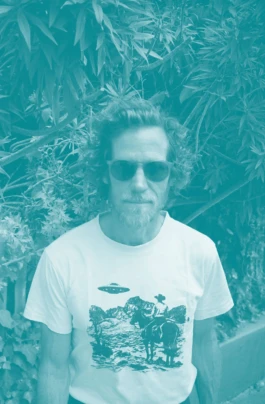
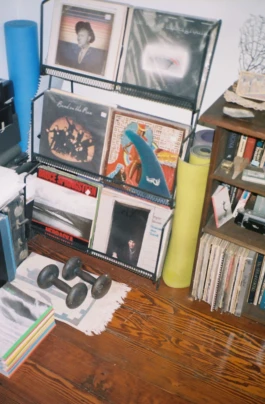
Very on Point
Todd Weaver is a self-taught photographer whose journey has been shaped by legendary mentors like Herb Ritts, Steven Klein, and William Claxton. Since 2015, he has been documenting SoCal's surf culture through dreamy, unexpected portraits that are true explorations of expressive color. Todd has been featured in numerous group shows and has been selected multiple times for the American Photography Annual. He is ingrained in the scene at First Point, Malibu and owns a rather stunning collection of Mercedes-Benz.
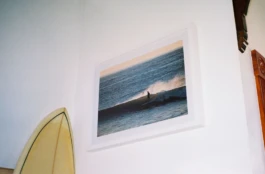
What were some of the most memorable experiences from your childhood that shaped your perspective on life?
I grew up mostly in the suburbs of Kansas City, with a couple of formative years in Aspen. My childhood was filled with memorable moments, like spending summer days fishing at Seven Ponds with friends, skateboarding down the only hill in Kansas with my best friend Jeff, and BMX racing in Aspen. Playing football in 5th grade was tough—I was skinny and got my ass kicked, once blowing a huge touchdown and crying on the sidelines. We had wild bottle rocket fights in Kansas, where we'd make shields out of cardboard and hold Roman candles. I was the worst player on my basketball team in 4th grade, but I found fun in other ways, like snake hunting by the river behind the city pool where we spent entire days.
When my parents split up, my mom moved my siblings and me to Aspen, where I had to adjust to a new environment. I was teased by the kids at Aspen Middle School for what they thought was a Southern accent. But I also experienced firsts, like kissing a girl named Tina after school in 7th grade, and going to my first dance, dressed in Topsiders and a pink Izod with a popped collar. By 8th grade, my friends and I were experimenting—getting stoned and even dropping acid at 14. Those experiences shaped me and made me realize early on that the 9-to-5 office cubicle life wasn’t for me.
An interesting side note: I knew Paul Rudd in high school. He went to a rival school, but our best friends were cousins. On weekends, I’d see him driving his black Jeep Renegade, wearing a motorcycle jacket and sporting long hair. He was definitely one of the coolest guys I knew in high school.
You studied film and then moved to L.A. to work alongside some notable people in the industry, including Herb Ritts and Steven Klein. What did you learn during this period?
In my early days working in the photography industry, I learned from some of the best: Herb Ritts, Steven Klein, and William Claxton. Claxton was a personal hero. His jazz portraits from the '50s and '60s caught my attention when I was getting into jazz music during college, particularly his photos of a young Chet Baker at the piano and sitting in a window with a girlfriend. These photos are iconic: the god-like subject, the contrasty black and white, and the graphic use of the piano with his reflection. Herb Ritts was likely a fan of Claxton because he continued the tradition of timeless black-and-white film photography, making his photos both graphic and dynamic.
Spending time with William Claxton was such a pleasure. He was a classy man—well-dressed, well-spoken, and very engaging with his subjects. The same could be said for Herb Ritts and Steven Klein. Their engagement with their subjects, general focus, work ethic, and drive were inspiring, and clearly vital for success as we know it.
“He was a classy man—well-dressed, well-spoken, and very engaging with his subjects.”
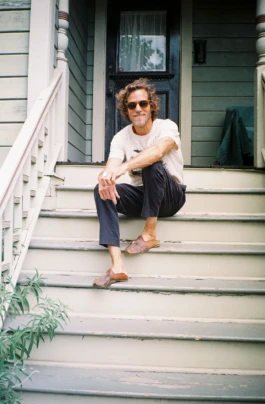
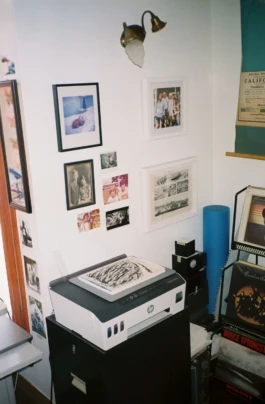
You’re a self-taught photographer. Who was your inspiration in the early days?
When I was first learning photography in the late '90s, I spent hours in the museums of Los Angeles to get a feel for what good art looks like and how it's composed. My early first loves in photography were all the heavyweights you'd find in a museum: Diane Arbus, Henri Cartier-Bresson, Jacques Lartigue, Weegee, Robert Frank, Irving Penn, and William Claxton.
How did your experimental book project featuring 36 artists come about?
Back in 2016, I made a book called Hidden. I made only two copies through the website Blurb. It was a series of photographs I took of people with their identities obscured. Although I liked the photos and the book, I felt that if I was going to make a book, it should be all new work. I wanted to use that energy of new excitement to propel me forward. My book 36 was inspired by a camera I bought on eBay in 2016. The camera is a half-frame model from the late '60s that takes two photos in the same space as a single frame for 35mm film. After shooting my first roll with the half-frame and seeing the heavy black line between each frame, I mocked up a grid of images from that roll in Photoshop and birthed the idea for 36: shoot 36 photos of 36 artists and create a grid of all 36 images, making a graphic representation of each person. I then decided that each person would be photographed in succession, with one photo taken every five seconds for three minutes. I thought this would capture something unexpected from each person. I texted Devendra Banhart the idea, and he agreed to do the portrait session. I ended up shooting Mel Shimkovitz after Devendra because she was over at his house at the time. They are two of my favorite sessions in the book.
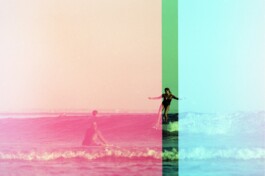
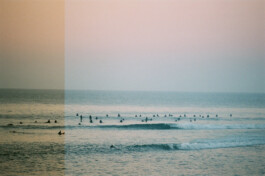
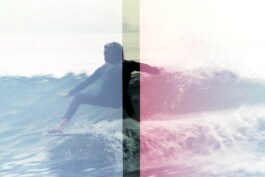
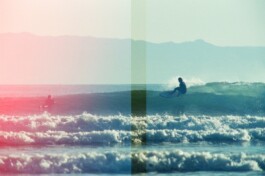
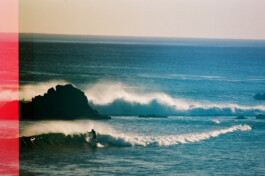
When did you start documenting the SoCal surf scene, specifically the locals at First Point?
I started shooting my surf series after I got into surfing in 2015. I began surfing two or three days a week out of sheer obsession to improve. After finishing 36, I wondered what my next project would be. Shortly after starting surfing, I figured why not shoot this new obsession? So, I started bringing my cameras to every surf outing. My first photos were taken with my half-frame camera. I just happened to have a longer lens for it because it came with one of the camera bodies I bought while making 36. I was really into the midday blown-out light, the colors of the morning and evenings. The whole experience excited me. I had just gotten into using the iconic waterproof camera, a Nikonos, a couple of years before I started surfing.
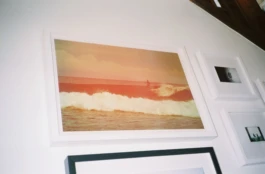
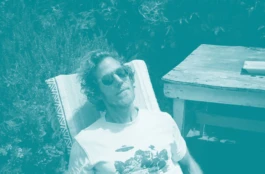
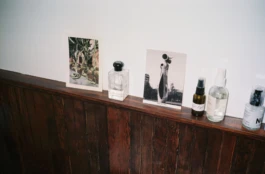
You’ve got a very recognizable and unique aesthetic with your surf photography. Where did this exploratory use of color originate from?
I discovered my color process shortly after developing the first couple of rolls. It's top-secret stuff, so I can't tell you how I do it. Sorry! My only hint is that it's based on an old Hollywood technique. If I told you any more, I'd have to kill you.
Now you’ve lived in L.A. for over 30 years and spent a long time in the house that was featured in Mike Mills’ film C’mon C’mon. How have things changed, or not, over the years?
I've lived in L.A. for 30 years. How has it changed? It sure has gotten expensive! (old guy voice) But I adore this city. I didn't realize how good I had it when I rented the bottom floor of a house in Echo Park (with a separate entrance) for $1,370. It was 2 bedrooms, 2 bathrooms, an office, and a backyard adjacent to Elysian Heights, with a view of the city. Insane. Back then, there was so much more freedom to travel, eat out, and go to shows. Los Angeles hasn't changed much as a whole, but Echo Park, where I've lived for the last 19 years, has gotten better in most measurable ways: crime is way down—there isn't a gang in my neighborhood that I'd hear cops chasing weekly. Helicopters were a daily occurrence, and now I only see them once in a while. Now we have more restaurants to choose from, an expensive grocery store that I reluctantly shop at, and Echo Park itself is much nicer now.
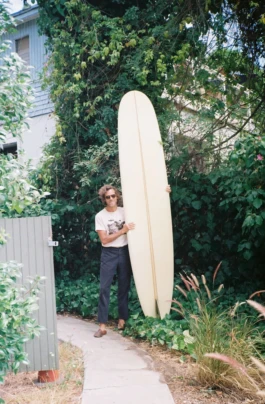
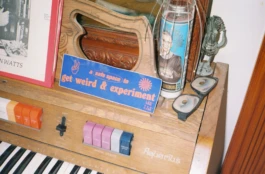
“Back then, there was so much more freedom to travel, eat out, and go to shows.”
What jams have you been listening to lately?
Jessica Pratt's Here in the Pitch has been my favorite record of the year. I've been loving seeing Will Worden play live. I’ve weirdly been getting into Black Sabbath for the first time—I mean, besides their hits. Lana Del Rey has resonated with me lately. Maybe because it's summer in L.A.? "Sad summers in L.A. with Lana Del Rey!" Haha.
My summer playlist is all over the place. Here's a list, in this order:
It Ain't Easy by David Bowie
Phantom of the Panther by Mulatu Astatke
Adrashash Tefabegn by Lemma Demissew
Main Title from Pat Garrett and Billy the Kid by Bob Dylan
Mista President by The Souljazz Orchestra
George's Dilemma by Clifford Brown
Street Hassle by Lou Reed
Song to the Siren by Tim Buckley
The Swimming Song by Loudon Wainwright III
I'm all over the place. I love jazz AND country. And sad girl femme fatales from L.A. I also love hip-hop. Kendrick is my current fave.
I'm off to other things now.
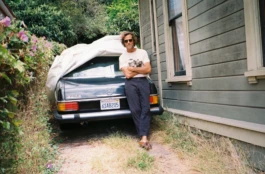
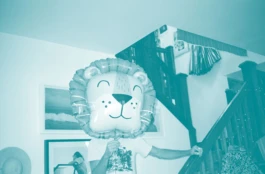

Very on Point

Todd Weaver is a self-taught photographer whose journey has been shaped by legendary mentors like Herb Ritts, Steven Klein, and William Claxton. Since 2015, he has been documenting SoCal's surf culture through dreamy, unexpected portraits that are true explorations of expressive color. Todd has been featured in numerous group shows and has been selected multiple times for the American Photography Annual. He is ingrained in the scene at First Point, Malibu and owns a rather stunning collection of Mercedes-Benz.

What were some of the most memorable experiences from your childhood that shaped your perspective on life?
I grew up mostly in the suburbs of Kansas City, with a couple of formative years in Aspen. My childhood was filled with memorable moments, like spending summer days fishing at Seven Ponds with friends, skateboarding down the only hill in Kansas with my best friend Jeff, and BMX racing in Aspen. Playing football in 5th grade was tough—I was skinny and got my ass kicked, once blowing a huge touchdown and crying on the sidelines. We had wild bottle rocket fights in Kansas, where we'd make shields out of cardboard and hold Roman candles. I was the worst player on my basketball team in 4th grade, but I found fun in other ways, like snake hunting by the river behind the city pool where we spent entire days.
When my parents split up, my mom moved my siblings and me to Aspen, where I had to adjust to a new environment. I was teased by the kids at Aspen Middle School for what they thought was a Southern accent. But I also experienced firsts, like kissing a girl named Tina after school in 7th grade, and going to my first dance, dressed in Topsiders and a pink Izod with a popped collar. By 8th grade, my friends and I were experimenting—getting stoned and even dropping acid at 14. Those experiences shaped me and made me realize early on that the 9-to-5 office cubicle life wasn’t for me.
An interesting side note: I knew Paul Rudd in high school. He went to a rival school, but our best friends were cousins. On weekends, I’d see him driving his black Jeep Renegade, wearing a motorcycle jacket and sporting long hair. He was definitely one of the coolest guys I knew in high school.
You studied film and then moved to L.A. to work alongside some notable people in the industry, including Herb Ritts and Steven Klein. What did you learn during this period?
In my early days working in the photography industry, I learned from some of the best: Herb Ritts, Steven Klein, and William Claxton. Claxton was a personal hero. His jazz portraits from the '50s and '60s caught my attention when I was getting into jazz music during college, particularly his photos of a young Chet Baker at the piano and sitting in a window with a girlfriend. These photos are iconic: the god-like subject, the contrasty black and white, and the graphic use of the piano with his reflection. Herb Ritts was likely a fan of Claxton because he continued the tradition of timeless black-and-white film photography, making his photos both graphic and dynamic.
Spending time with William Claxton was such a pleasure. He was a classy man—well-dressed, well-spoken, and very engaging with his subjects. The same could be said for Herb Ritts and Steven Klein. Their engagement with their subjects, general focus, work ethic, and drive were inspiring, and clearly vital for success as we know it.
“He was a classy man—well-dressed, well-spoken, and very engaging with his subjects.”


You’re a self-taught photographer. Who was your inspiration in the early days?
When I was first learning photography in the late '90s, I spent hours in the museums of Los Angeles to get a feel for what good art looks like and how it's composed. My early first loves in photography were all the heavyweights you'd find in a museum: Diane Arbus, Henri Cartier-Bresson, Jacques Lartigue, Weegee, Robert Frank, Irving Penn, and William Claxton.
How did your experimental book project featuring 36 artists come about?
Back in 2016, I made a book called Hidden. I made only two copies through the website Blurb. It was a series of photographs I took of people with their identities obscured. Although I liked the photos and the book, I felt that if I was going to make a book, it should be all new work. I wanted to use that energy of new excitement to propel me forward. My book 36 was inspired by a camera I bought on eBay in 2016. The camera is a half-frame model from the late '60s that takes two photos in the same space as a single frame for 35mm film. After shooting my first roll with the half-frame and seeing the heavy black line between each frame, I mocked up a grid of images from that roll in Photoshop and birthed the idea for 36: shoot 36 photos of 36 artists and create a grid of all 36 images, making a graphic representation of each person. I then decided that each person would be photographed in succession, with one photo taken every five seconds for three minutes. I thought this would capture something unexpected from each person. I texted Devendra Banhart the idea, and he agreed to do the portrait session. I ended up shooting Mel Shimkovitz after Devendra because she was over at his house at the time. They are two of my favorite sessions in the book.





When did you start documenting the SoCal surf scene, specifically the locals at First Point?
I started shooting my surf series after I got into surfing in 2015. I began surfing two or three days a week out of sheer obsession to improve. After finishing 36, I wondered what my next project would be. Shortly after starting surfing, I figured why not shoot this new obsession? So, I started bringing my cameras to every surf outing. My first photos were taken with my half-frame camera. I just happened to have a longer lens for it because it came with one of the camera bodies I bought while making 36. I was really into the midday blown-out light, the colors of the morning and evenings. The whole experience excited me. I had just gotten into using the iconic waterproof camera, a Nikonos, a couple of years before I started surfing.



You’ve got a very recognizable and unique aesthetic with your surf photography. Where did this exploratory use of color originate from?
I discovered my color process shortly after developing the first couple of rolls. It's top-secret stuff, so I can't tell you how I do it. Sorry! My only hint is that it's based on an old Hollywood technique. If I told you any more, I'd have to kill you.
Now you’ve lived in L.A. for over 30 years and spent a long time in the house that was featured in Mike Mills’ film C’mon C’mon. How have things changed, or not, over the years?
I've lived in L.A. for 30 years. How has it changed? It sure has gotten expensive! (old guy voice) But I adore this city. I didn't realize how good I had it when I rented the bottom floor of a house in Echo Park (with a separate entrance) for $1,370. It was 2 bedrooms, 2 bathrooms, an office, and a backyard adjacent to Elysian Heights, with a view of the city. Insane. Back then, there was so much more freedom to travel, eat out, and go to shows. Los Angeles hasn't changed much as a whole, but Echo Park, where I've lived for the last 19 years, has gotten better in most measurable ways: crime is way down—there isn't a gang in my neighborhood that I'd hear cops chasing weekly. Helicopters were a daily occurrence, and now I only see them once in a while. Now we have more restaurants to choose from, an expensive grocery store that I reluctantly shop at, and Echo Park itself is much nicer now.


“Back then, there was so much more freedom to travel, eat out, and go to shows.”
What jams have you been listening to lately?
Jessica Pratt's Here in the Pitch has been my favorite record of the year. I've been loving seeing Will Worden play live. I’ve weirdly been getting into Black Sabbath for the first time—I mean, besides their hits. Lana Del Rey has resonated with me lately. Maybe because it's summer in L.A.? "Sad summers in L.A. with Lana Del Rey!" Haha.
My summer playlist is all over the place. Here's a list, in this order:
It Ain't Easy by David Bowie
Phantom of the Panther by Mulatu Astatke
Adrashash Tefabegn by Lemma Demissew
Main Title from Pat Garrett and Billy the Kid by Bob Dylan
Mista President by The Souljazz Orchestra
George's Dilemma by Clifford Brown
Street Hassle by Lou Reed
Song to the Siren by Tim Buckley
The Swimming Song by Loudon Wainwright III
I'm all over the place. I love jazz AND country. And sad girl femme fatales from L.A. I also love hip-hop. Kendrick is my current fave.
I'm off to other things now.

